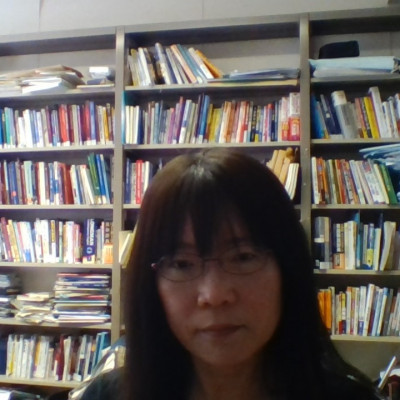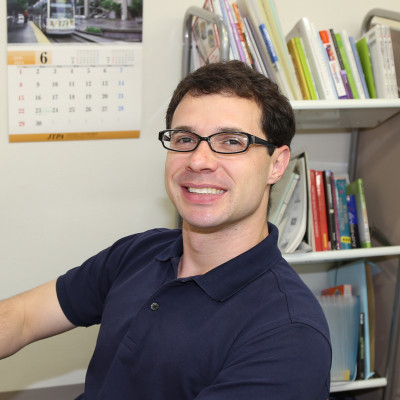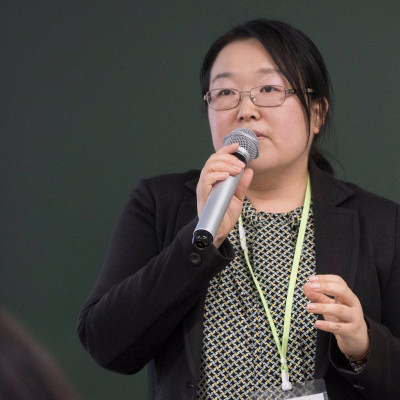Sessions / Location Name: Room 12
Virtual Location
Virtual: You cannot enter virtually via this page. Click on the titles of individual presentations or go to the Live Page
The Motivations of Vietnamese Students in Our Classrooms #2198
There has been a noticeable increase in Vietnamese student numbers in higher education recently, changing class dynamics for many teachers. This presentation uses the results of a mixed method study exploring motivations of Vietnamese studying in Japan, and the challenges they encounter including financial and social effects of the COVID-19 pandemic. Understanding these motivations will give educators a fresh perspective of the Vietnamese diaspora, and suggestions to better accommodate them.
Enriching Online Study Abroad Programs With Cultural Lessons #2196
This presentation highlights a support project for Japanese students enrolled in online study abroad (SA) programs. As a result of pandemic-related travel restrictions, some students have started online SA programs. However, the barrier to desired increases in intercultural competency is challenging. This project sought to enrich online SA experiences by providing supplementary lessons aimed at enhancing intercultural awareness. This presentation highlights how the project was set up, and participants’ perceptions of the support lessons’ value.
Impact of Short-Term Study Abroad on Long-Term L2 Motivation #2119
This study examines the effects of study abroad experiences on Japanese university students’ long-term L2 motivation. Thirteen students who had attended a three-week program in the US at the end of their second year participated in the study. They completed a questionnaire and had follow-up interviews before their departure, upon their return, 5 months later, 10 months later, and upon graduation. Following the presentation of the results, pedagogical implications will be discussed.
One Size Doesn’t Fit All: Appropriate Tutorial Session Length #2055
The authors bring valuable findings accumulated through their research with current practitioners about how writing centers can best decide on the tutoring session length at their institution. In this presentation, the speakers will share advice about the important decision when selecting the proper tutorial session length. This session will be helpful both to those in the planning stage and those looking to improve an established writing center or self-access center with tutorial sessions.
Study Abroad Advising in the New Normal: In Between Ideals and Realities #2248
In this presentation, a case study of how teaching and non-teaching staff members in a university in Japan conducted study abroad advising in 2020 will be examined. The presenter will describe two different approaches of study abroad advising (online seminars and advising desk) and the outcomes for university students in a comprehensive private university in Japan. Implications for future styles of study abroad advising and language education in the new normal will be further discussed.
Successful Development of a Placement Test Appropriate to Context #2223
This presentation begins with concerns about commercial placement tests that led the researchers to develop their own. The presenters demonstrate steps to determining item types, producing them, trialing them, and refining the test instrument. Design tips for making test administration run smoothly are also shared. Statistical analyses supporting validity and reliability are presented. Finally, challenges and how they were overcome will be discussed. Anyone considering developing their own placement test may benefit from this presentation.
Formulaic Language in English for Academic Purposes Textbooks #2273
In this study, I examined formulaic language that appears in English for Academic Purposes (EAP) textbooks. I classified these expressions according to their functions, such as disagreeing or asking questions. I also compared the most frequent expressions from this textbook corpus to a corpus of academic spoken English. Attendees will also hear a discussion of the larger differences between language in academic textbooks and naturally occurring language.
Benefits of Conducting Mixed-Methods L2 Writing Research: An Exemplar Study #2164
This paper reviews studies that employed mixed-methods research (MMR) designs in L2 writing research. It discusses what MMR is, how it can be a self-standing paradigm, and what makes it a distinctive paradigm. It then explores benefits and challenges of conducting MMR in L2 writing research and introduces and reflects on a recent MMR study on L2 writing conferences in a university setting.
Using CEFR/CV Illustrators to Navigate Meaning in a Mixed-Level CLIL Class #2221
The presenter explores results after the first cycle of an action research project which applies the illustrative scales of the CEFR/CV to explain ways students in a mixed-level CLIL classroom navigate meaning from texts and lectures, especially when the level of the materials may be above their level. Although efforts are made to match student abilities, mixed-levels, as well as the nature of university-level material, often means materials may be above student level.
Peer Assessments: Which Is Better, a Likert-Type or a Rubric? #2033
Students in two classes at the same Japanese university conducted peer assessments on their peers’ presentations. In one class, the students utilized a Likert-type scale assessment sheet with Categories 1–4. In the other class, the students utilized a rubric assessment sheet where qualitative definitions of evaluative items were written at particular levels of achievement. These data were compared, using a multifaceted Rasch analysis computer program.
Using Technology to Assess the Interactive Skills in a Speaking Test #2146
This presentation will focus on an innovative face-to-face testing system that incorporates a variety of digital prompts to assess students utilizing a rubric based on CEFR-J can-do statements. This speaking test is designed specifically for Japanese learners of English and assesses their ability to speak and interact. Technology was used to streamline the test by using digital delivery for images and video in conjunction with an online assessment scoring input system.
Staying Committed: Foreign Faculty in Japanese Universities #2088
This presentation investigates the relationship foreign faculty in Japan have with their university through the lens of organizational psychology. The study highlights why educators’ commitment to their university is increasingly important, the positive outcomes that result from greater faculty commitment, and what department administrators and other leaders should consider in order to improve the relationships faculty have with their institutions.
Conversation-Based Learning: We Use Partners, Not Grammar #2068
Grammar-based learning tries to prevent 10,000 mistakes and then measures ability by how many mistakes you make. It’s like the diet industry: it seems logical that it would work, but the success rate is 2%. Conversation-based learning is all conversations and conversation tests, and students find and fix their own mistakes. In short, students write what they will say, talk about what they wrote, transcribe what they said, and fix their own mistakes.
Positional Tendencies for Illustrations in Elementary EFL Textbooks #2050
This research analyzed positional data for 2,539 illustrations from fourteen elementary EFL textbooks. This analysis revealed significant differences between the left- and right-hand pages. These unique visual presentation tendencies are discussed in terms of their potential semantic significance. It is hoped that these findings provide insight into compositional patterns that could be of value to those who arrange images for pedagogic purposes, be it as an educator or materials designer.
Outcomes of a Quantitative Research Training Project #2142
The goal of this presentation is to describe the outcomes of a collaborative professional development project designed specifically for the needs and interests of language teachers looking to get started with quantitative research. The presenter will introduce the goals and methods of the 2018 quantitative research training project and then describe outcomes in terms of participation evidence, teacher feedback, and tangible products including conference presentations and published papers.
Similar yet Different: Teacher Views of Humor in Online Language Teaching #2062
Many language instructors use humor to improve the class atmosphere and make learning more memorable. With the sudden shift to online teaching, however, what challenges did teachers face and how did they manage to still incorporate humor into their lessons? The presenters will summarize the results of a mixed-methods survey administered to English language teachers (N = 60) in Japan. Quantitative and qualitative analysis will be shared, along with ramifications for online instruction.
Chinese EFL Teachers’ Perceptions of Professional Development Options #2096
This study looks at a cohort of 12 students in a new MA TESOL program at a Sino-US joint university in China. Through surveys and focus group interviews, the researchers intend to uncover these teachers’ perceptions of current professional development options, and the rationale for pursuing an advanced degree. Discussions will focus on the needs of EFL teachers’ suggestions for future directions, as well as implications for policymakers and education administrators.
Teacher Agency In In-House Textbook Development: A Narrative Inquiry #2090
This institution-based case study investigated teacher agency in an in-house textbook development process for a university-level English debate course. The study found that manifestations of teacher agency in the textbook production process were non-linear and adaptive due to the instructor’s in-person experiences and negotiations with her students and co-textbook writers, and her attempt to establish an alignment with a larger institutional context. The researchers discuss select results from a sociomaterial perspective to highlight important findings.
Responsive to Proactive: Professional Learning to Support Remote Teaching #2115
In the move to emergency online teaching, an evolving professional learning framework was created to respond to the training needs of teachers. Through regular targeted sessions and by harnessing the growing collective knowledge of an online teaching platform and online teaching approaches, timely solutions to emerging staff needs were provided. This session shares the successes and challenges of the framework, plus takeaways for the future in the return to normal face-to-face teaching.
Ten Practical Suggestions for Using Language Teacher Noticing #2162
Language teacher noticing involves attention, interpretation, and decision making. It is a form of reflection occurring during engagement with learners. This talk aims to encourage dialogue about learning to notice among teachers of varying backgrounds and levels of expertise. Relevant literature will be described and participants will be invited to discuss suggestions concerning how to use noticing to: (1) develop rapport, (2) support acquisition, (3) enhance participation, (4) foster reflection, and (5) guide observation.
Immigrant Chinese Language Teachers in Singapore: A Narrative Inquiry #2148
This study reports the professional experiences of three immigrant Chinese language teachers (ICLTs) regarding their professional acculturation into the Singapore education system. This study investigates how the ICLTs constructed their teaching identities through the negotiation of their positionality in their daily working life at school. The research findings indicate that healthy acculturation of the ICLTs required efforts to be made by both sides - ICLTs and members of the host school community.
Role of Masks in the EFL Classroom: Challenges and Recommendations #2268
Masks pose a unique challenge in the EFL classroom, as attenuated speech signals, loss of visual cues, and even discomfort can have a negative impact on the L2 learner. This study investigated the effects of masks in the EFL classroom through questionnaires and listening comprehension tests with particular interest in the role of teachers’ L1, visual cues, and microphones. An overview of the research and results with an emphasis on recommended practices will be presented.
Generic vs. Explicit Grammatical Feedback for Moodle Quiz Items #2167
The Moodle item feedback option was used to deliver two types of Japanese feedback, generic and explicit, for performance on multiple-choice items testing knowledge of participles, and comparatives and superlatives. Participants at two institutions, in experimental and control groups, received either the generic feedback (“try harder”) or the explicit explanation of why their selection was incorrect. Pre- and post-tests were used to measure gains. Results and implications will be provided and discussed.
What Is Writing in English? A Discussion of Writers’ Felt Sense of Writing #2106
This study explores L2 writers’ felt sense of writing in English as perceived by Japanese students. The results showed that the participants’ emotions regarding writing demonstrated the complexities of expressing themselves in English due to the differences in word meaning, usage, and styles. Although the participants’ emotions regarding writing made them insecure about writing in English, their emotions showed the importance of performing writing and achieving their academic goals through writing practices.
ER and English Proficiency: How Many Words Should Students Read? #2037
To estimate the necessary amount of words in reading to push students’ English level into the next stage, data for six years (2014-2019) were analyzed to find the threshold value of words that causes changes in TOEIC Bridge test scores. The result implies that the amount of reading around 500,000 words plays a critical role in advancing to the next language level.
Measuring Vocabulary Gains in Extensive Reading #2040
With benefits to motivation, reading fluency, learner autonomy and vocabulary knowledge development, extensive reading (ER) is now a common component of university English courses. However, the crucial question of exactly how much ER is required to generate discernible improvement remains largely unanswered. This question is addressed through a year-long study of data on the number of words read by 160 university undergraduates and the gains they made on pre- and post-course vocabulary tests.
Promoting Multimodal Literacy in EFL Class With a Biographical Picture Book #2084
This research focuses on one Japanese middle school student’s reading and interpretation of the nonfiction picture book Lotte’s Magical Paper Puppets: The Woman Behind the First Animated Film. The purpose was to see if the visual text would help the student understand the vocabulary in the written text. It also focused on her interpretations of the visual text and recall ability for both visual and written texts.
Translanguaging in Lecture Notes: From Samples to Models #1980
Translanguaging often appears in English as a medium of instruction students’ notes, as multilingual students employ their language resources to take notes during lectures. This presentation shares analysis of 500+ sets of student notes and survey results and presents models of translanguaging in notetaking. Attendees will gain insights into notetaking and appreciation for the benefits of translanguaging practices in academic listening. Practical tips for teaching notetaking and assessing note content will be proposed.


































